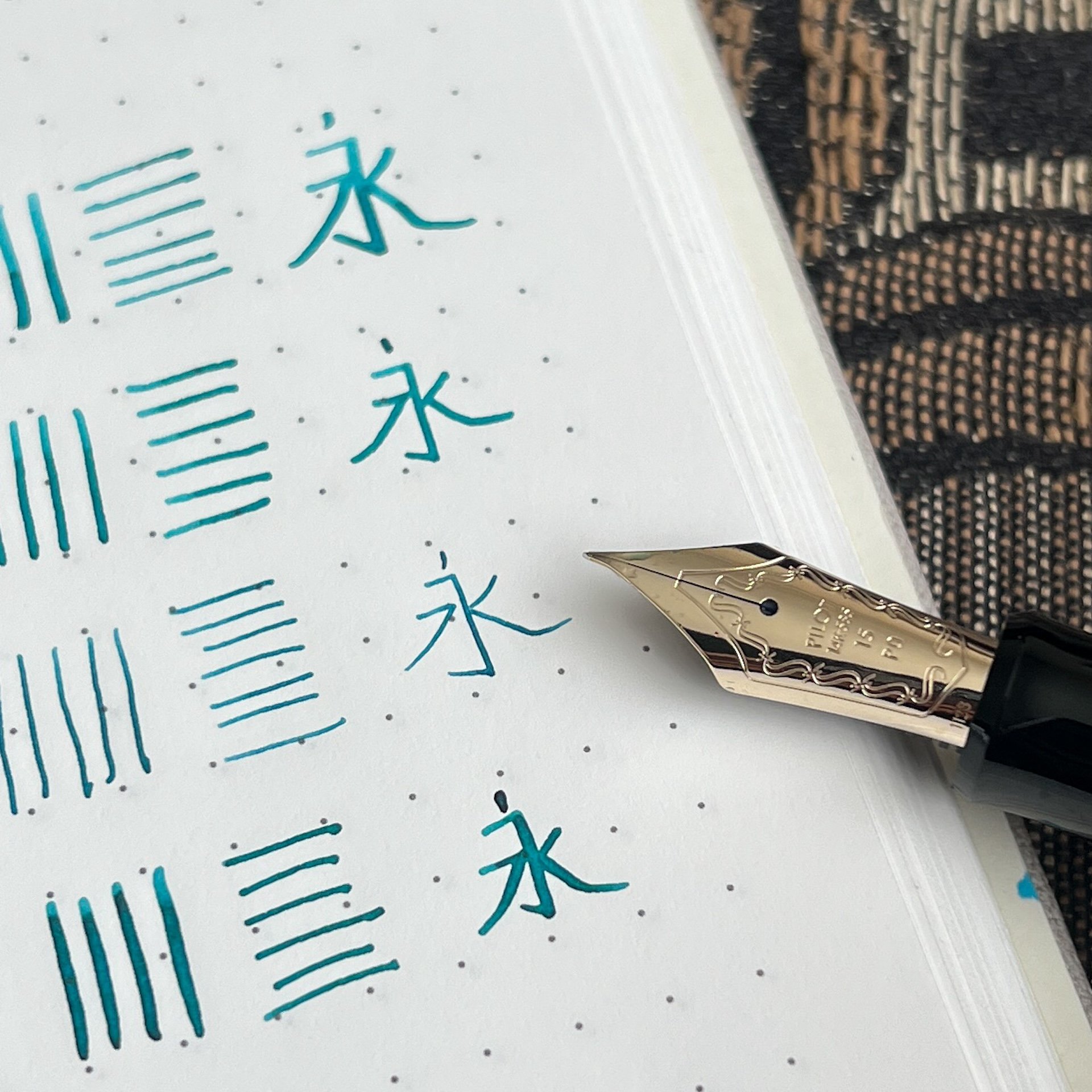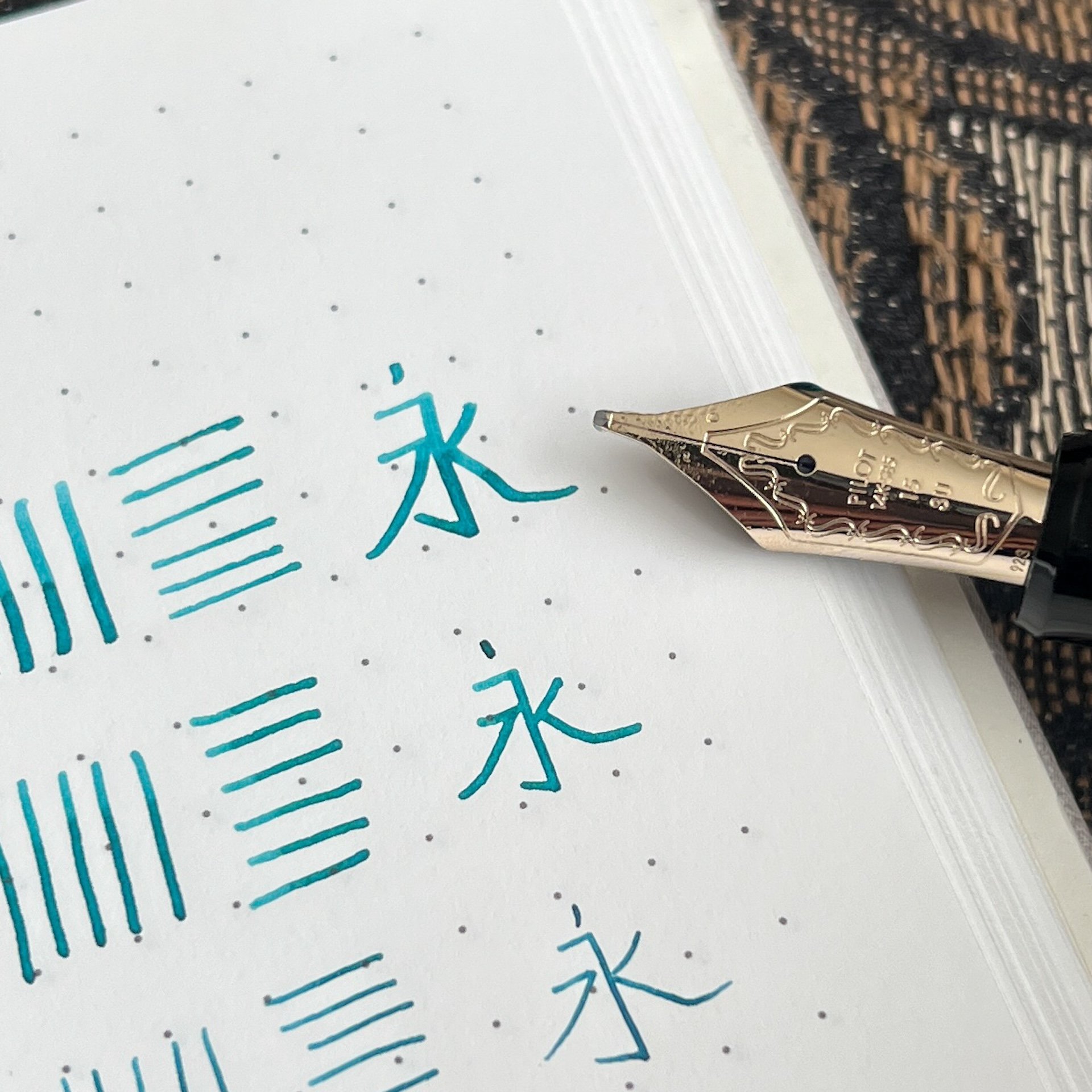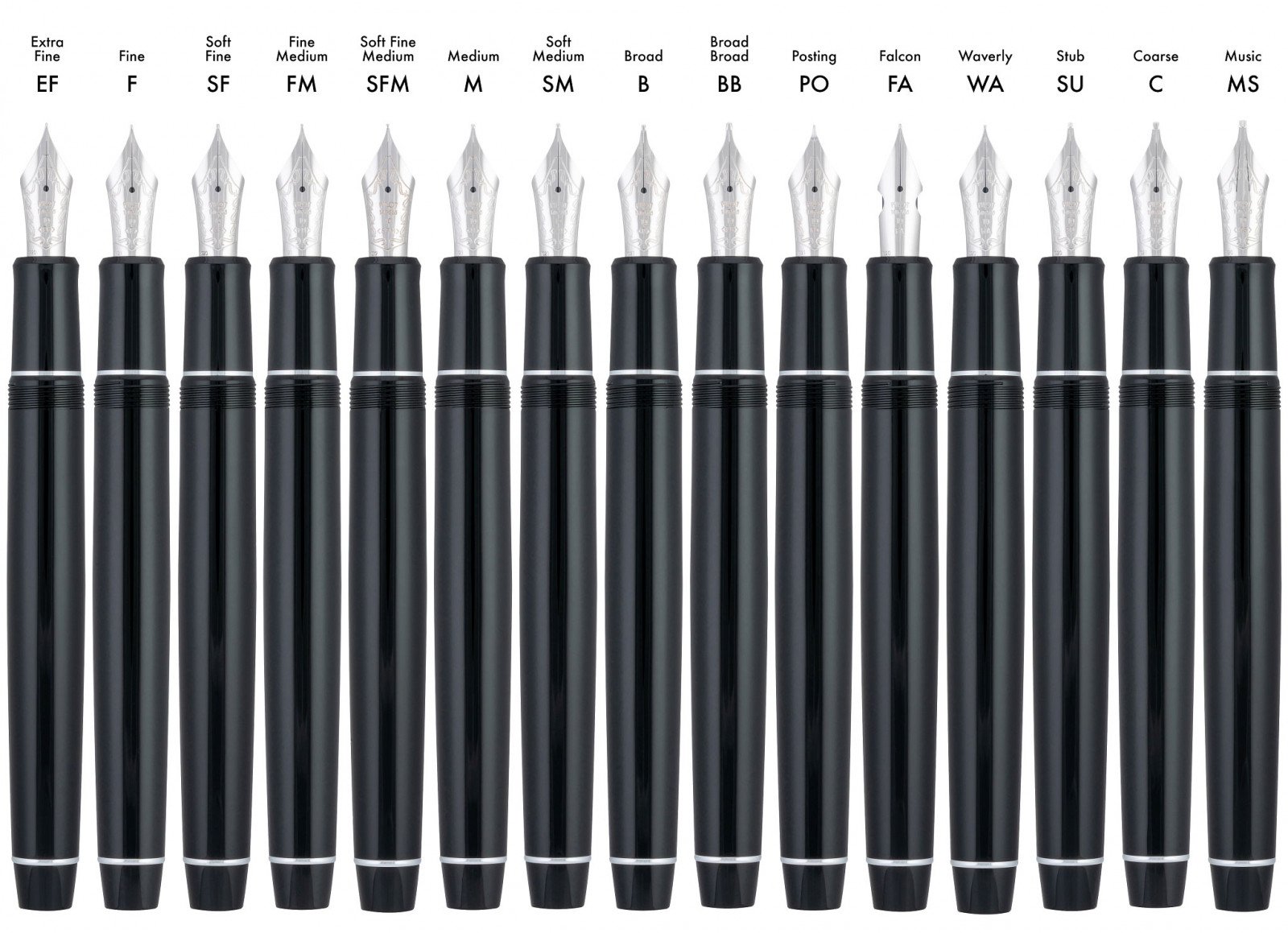(Kimberly (she/her) took the express train down the fountain pen/stationery rabbit hole and doesn't want to be rescued. She can be found on Instagram @allthehobbies because there really are many, many hobbies!.)
When Ian Schon first announced his in-house, titanium Monoc nib in late 2022, I rushed to pre-order it, picked it up a few months later at the Philly Pen Show, and ended up going through three converters’ worth of ink to write this Monoc review. Since then, I got a Bock Monoc with a Fine nib last year, and got the Cursive Monoc at the Baltimore Pen Show earlier this year.
Top to bottom: Fine, Medium, Cursive Monoc.
I won’t go into a lot of detail since that’s already been covered in the other article, but I wanted to share some writing samples since they all write differently. There is also a blog post that goes into more detail about the Monoc and has much better nib pictures than I can take.
One of the things that I like about the Monoc is that I can put them in a wide variety of pens that take #6 nib units, including Schon Dsgn Full Size and Pocket 6, Franklin-Christoph, and especially Montegrappa pens.
Left to right: Franklin-Christoph 46 in Italian Ice (Medium), Conid Minimalistica Monarch (Fine Bock), and Montegrappa Mia Everglades (Cursive.)
I will start with the Medium Monoc since that’s the one I’ve had the longest and used the most (in at least 7 different pens, some with multiple inkings). My Medium Monoc is a decently wet writer and produces lines that are a bit closer to a Medium-Broad Jowo, if such a thing existed. Each of these nibs are individually machined and hand-tuned by Ian (he’s the only one who tunes them) so there can be minor variations in wetness and width. I sometimes use drier inks to compensate - this time around I picked Robert Oster Viola, which is a lovely light purple ink but definitely on the dry side, even in this wet nib.
I love that all of the Monoc nibs can also be used to write on the reverse, that is, flipped around/rotated such that the feed is facing up. Some of the Monoc’s lines, as you will see, are more angle dependent. As a reminder, I am a high/steep angle writer (typically ~75 degrees) so my lower angle writing samples are a little messier. Paper and ink will also make a difference so keep that in mind when comparing writing samples.
Writing sample with the Medium Monoc, the reverse will give you a finer line. You can get more of a difference between the regular and reverse with a wetter ink. Writing angle doesn’t affect the line width much on either side.
Here is a writing sample with the Medium Monoc and Medium nibs from other brands: Graf von Faber-Castell Intuition (18kt gold), Lamy Studio (steel), Nahvalur Schuykill, Opus 88 Mini (Jowo 5 Medium), Platinum 3776, Sailor Pro Gear (21kt gold), Radius Settimo (Jowo 6 Medium), Sailor Pro Gear Slim (14kt gold), TWSBI Eco, Taccia Spectrum (Sailor steel), Kaweco Special.
The Bock Monoc has a Fine nib and is inked with a very wet ink, KWZ Monarch, in the Conid Minimalistica, which is also in a fairly wet pen. It has a smooth fine line on the regular, and a broad architect line on the reverse.
Writing sample with the Fine Monoc. Writing angle doesn’t make much of a difference on the regular but definitely does on the reverse.
Here is a writing sample with the Fine Monoc and nibs from other brands: Pilot Vanishing Point, Kaweco Sport, Platinum Plaisir 05, TWSBI Precision. On the reverse: Lamy Studio (steel B), Kaweco Sport (B), Lamy Accent (14kt gold M), Jowo Broad Architect, Lamy BB Architect (ground by Gena Salorino of Custom Nib Studio). The contrast of the Fine Monoc’s reverse down vs cross stroke isn’t as great as with a more traditional architect (the last two.)
Last and definitely not least, the Cursive Monoc isn’t a “regular” Monoc with a Cursive grind added to it. Ian says the Cursive Monoc starts off as its own nib shape (sorry, I can neither explain nor share the technical aspects) and then gets ground and tuned further to a smooth, “cursive italic”. I put that in quotes because Ian says it’s not a traditional cursive italic the way a nib grinder might describe it, but it’s definitely close enough to call it that. This grind makes narrow horizontal strokes and broader vertical strokes, giving noticeable line variation whether you are writing in cursive or print.
It is currently inked with an average wetness ink, Robert Oster x Vanness Pens Hemp, in a Montegrappa Mia. It has a smooth Medium to Medium Broad cursive italic line/variation on the regular, and an even broader line on the reverse than the Fine Monoc’s reverse.
Writing sample with the Cursive Monoc and nibs from other brands: Franklin-Christoph Fine SIG (Stub Italic Gradient), F-C Broad Stub (Masuyama), Jowo 1.1 (14k5 gold), Pelikan Steel Broad CI (Masuyama), F-C Medium SIG, Waterman Carene Stub (or BB, depending on who you ask), TWSBI Eco Broad & Fine “In Between” (Mark Bacas’ grind that’s “in between” a stub and a CI), and for the reverse, Lamy 2000 BB Architect by Gena Salorino, Jowo Broad Architect.
The writing angle doesn’t really impact the writing of any of the Monocs on their regular sides, nor for the Medium Monoc on the reverse. But on both the Fine and Cursive Monocs, the width of the reverse side is more angle dependent, moreso for the Fine than for the Cursive. Of the 3 Monocs, it’s hard to pick a favorite, but if I could only use one, it would be the Fine because I love how differently the regular and reverse sides write.
Here are a few things that Ian wanted folks to know:
- The Bock-threaded Monocs aren’t listed on the website but they can be requested.
- Monoc nibs have a 5-10 day fulfillment turnaround because they are made to order. If you need something sooner, please reach out to them in case there are some in stock.
- If you see one of their nibs at a show or someone’s IG post but you don’t see it online, reach out to them to ask if it can be made. Ian and team will often make special anodized colors that might not be listed on the website.
- Avoid using shimmer inks because the nib isn’t disassemble-able for thorough cleaning.
- Schon Dsgn is 3 people and Ian is the only one who does the fine tuning on the Monocs, so be patient, especially around pen show time when some or all of them may be traveling. Definitely send them an email if you have any questions.
The Schon Dsgn Monoc starts at $385 for polished titanium. Anodized options are also available - prices vary depending on complexity of the anodization (nib anodizing is done in-house, while anodization on the aluminum pens are done elsewhere).
As I said in my other article and will say again, yes, it is an expensive purchase, and no, this is not a nib for everyone. I value the innovation that goes behind the research and design of these nibs. I also like the stiff, nail-like writing experience that it provides, and the reversibility of the nibs is twice the fun even though I don’t take advantage of the reverse as much as I should. If you’ve been thinking about getting one and it fits your budget, definitely check them out, especially if you’re reading this during this weekend’s Chicago Pen Show!













































